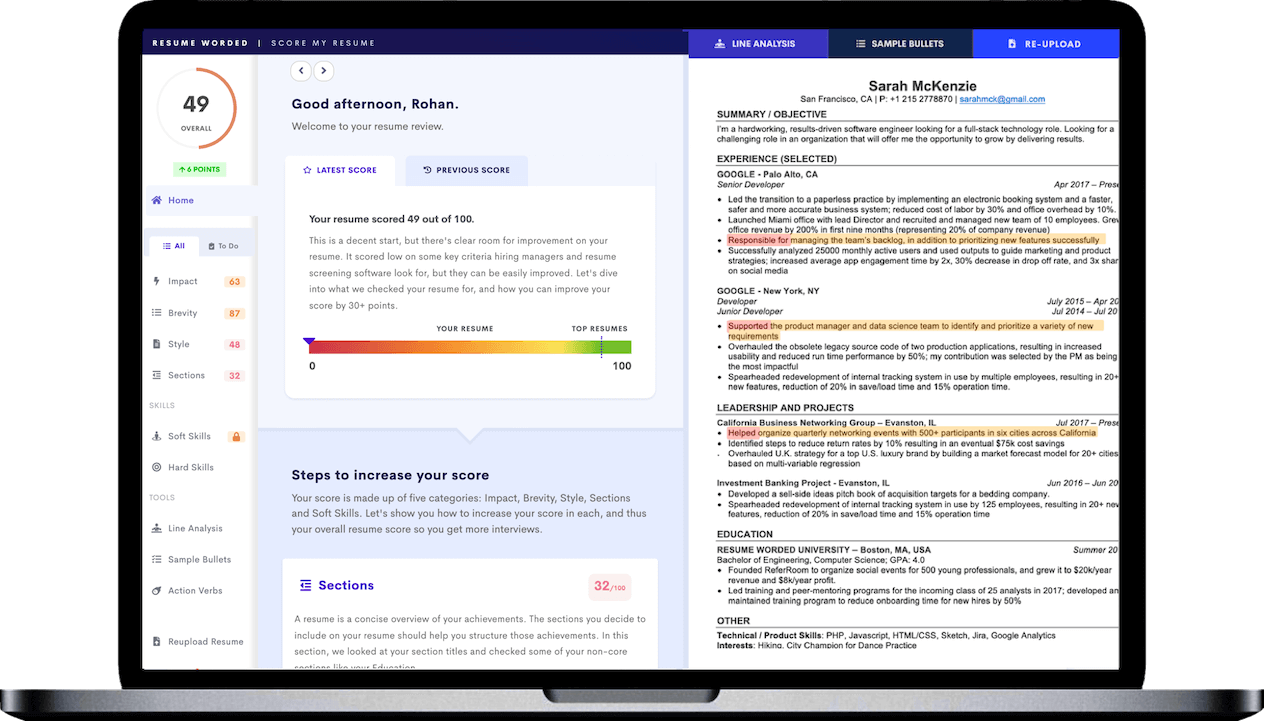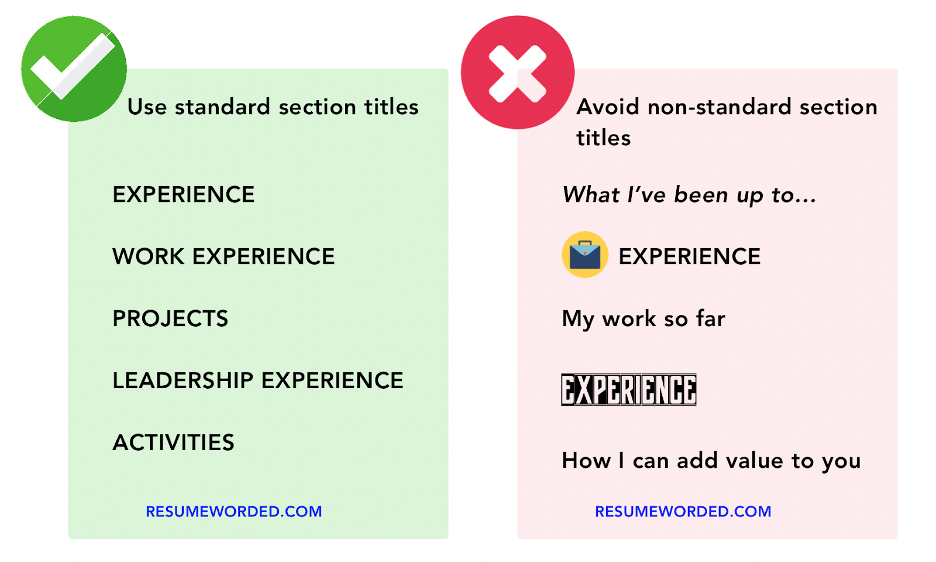Every year, it feels like there are new “rules” for resume writing. If you feel exhausted just trying to keep up… well, we don’t blame you.
The truth is, the best resume rules are timeless: You should keep your resume simple and personalized; focus on quantifiable achievements; and list technical skills that align with the job description. That said, hiring does go through trends, and it’s worth knowing what the current ones are so you can adapt accordingly.
Keep reading as we go over:
- How resume standards have changed over the past couple of years
- How to adapt your resume to modern hiring expectations
- Classic resume guidelines that never go out of style
But first, let’s take a look at some of the new resume “rules” that are here to stay.
The new rules of resume writing
If it’s been a while since you dusted off your resume, here’s what has changed in the past few years.
Use AI-powered keyword integration
Love it or hate it, AI is here to stay — so why not use it to your advantage? In 2025, Applicant Tracking Systems (ATS) have become more advanced, which makes keyword integration an essential part of passing the initial resume screen.
And no, this doesn’t mean you can resort to keyword stuffing or the old ‘copy and paste the job description in white text’ hack (that one hasn’t worked in a long time). Overstuffing your resume is just as bad as missing keywords — after all, it still needs to be readable by a real person once you’ve passed the screening stage.
How To: Use AI-powered tools to identify high-impact keywords for your industry and seamlessly integrate them into your resume.
Showcase remote work and digital proficiency
For every company pushing the ‘return to office’ agenda, there’s another that’s decided that remote work is here to stay. Either way, highlighting your ability to thrive in virtual environments and navigate digital tools demonstrates your adaptability to current work trends. Even if you’re applying for a full-time in-office job, digital proficiency is still one of the most in-demand skill sets for new hires, and most employers look favorably on candidates who were able to achieve high metrics without the usual managerial oversight.
How To: Include accomplishments related to managing projects remotely, leading offsite teams, navigating multiple time zones, and using collaborative digital tools like Slack, Asana, and Microsoft Teams.
Incorporate social media
Traditional resume advice is to leave social media off your resume, but that’s rapidly changing. Whether or not you link to your social media accounts, most companies will seek them out anyway — in fact, 69% of hiring managers say that they find it helpful to look at candidates’ social media profiles.
That doesn’t mean you need to immediately lock down your personal social media (though you should at least make sure there’s nothing on there you wouldn’t want a hiring manager to see). Instead, you should curate a work-appropriate social media presence on professional websites, LinkedIn, and other industry-relevant social media sites.
How To: Include a link to your LinkedIn, portfolio, or other social media profiles in your resume header alongside your contact details.
Don’t hide gig work — embrace it
It used to be that admitting to having a side hustle or gig work was a bit of a resume faux pas, but these days, it’s perfectly normal. The gig economy has gone mainstream, and plenty of people are either picking up extra work to subsidize the rising cost of living or opting for the flexibility of full-time freelancing.
How To: Group multiple short-term gigs under a single heading to keep things organized and give your accomplishments a chance to shine. For more tips, check out our articles on how to list freelancing or gig work on your resume.
Adapt innovative technology
This one’s a bit more controversial, but it can work well in certain fields. If you’re applying for a tech-centric role, adding a small touch like a QR code to your resume can show that you’re keeping up with industry trends.
Be aware that this can backfire in some cases — while startups in fast-moving fields may appreciate the high-tech approach, it may have the opposite effect in more conservative sectors.
How To: Link to an online portfolio, professional website, or other relevant information via a small QR code in your resume header or Projects section.
Write an ATS-friendly resume
ATS have been around for a while. What’s changed is how many companies use them — and how happy they are with the results. What that means for you is that there’s a decent chance that your resume is being scanned by ATS any time you apply for a job. Without a way of knowing which companies employ ATS or which platforms they use, the best thing you can do is to make sure your resume is always ATS-compatible.
The good news is that the best practices for writing an ATS-friendly resume are also the best practices for writing a human-friendly one — choose a clean, simple layout, use plain text instead of fancy images, and prioritize content over appearance.
How To: Start with an ATS resume template, choose a single-column layout, and stick to default fonts and margins. Our guide on how to beat ATS has more details if you’re curious.
Traditional resume rules that still matter
Wondering how many of the old rules still apply? The short answer is: Most of them! Here’s a quick rundown of the traditional resume rules that still hold good advice — and a couple you can safely ignore.
It’s still best practice to:
- Keep it short and simple. Clear headings, concise bullet points, and plenty of white space make your resume easy to skim, which means that recruiters can easily find the information they’re looking for. The whole document shouldn’t be longer than two pages (one is better, especially if you’re still early in your career).
- List your work experience in reverse chronological order. Your current or most recent job should always be at the top of your resume, with older positions at the bottom.
- Focus on accomplishments, not responsibilities. Starting each bullet point with an action verb keeps the focus on what you did and makes your accomplishments more compelling to readers.
- Demonstrate quantifiable achievements. Including measurable results reinforces your impact in previous roles and makes your claims more tangible. Add numbers to your bullet points wherever possible, even if it’s only a best guess.
- Prioritize technical skills over soft skills. While soft skills are essential in most roles, you shouldn’t reserve a specific spot in your resume for them. Let those shine through via your accomplishments and dedicate your skills section to hard skills only — the more specific, the better.
- Personalize your resume for each job application. Taking a few minutes to customize your resume demonstrates a genuine interest in the role — this could be as simple as adding a resume header that matches the job title or swapping out one or two more relevant accomplishments.










